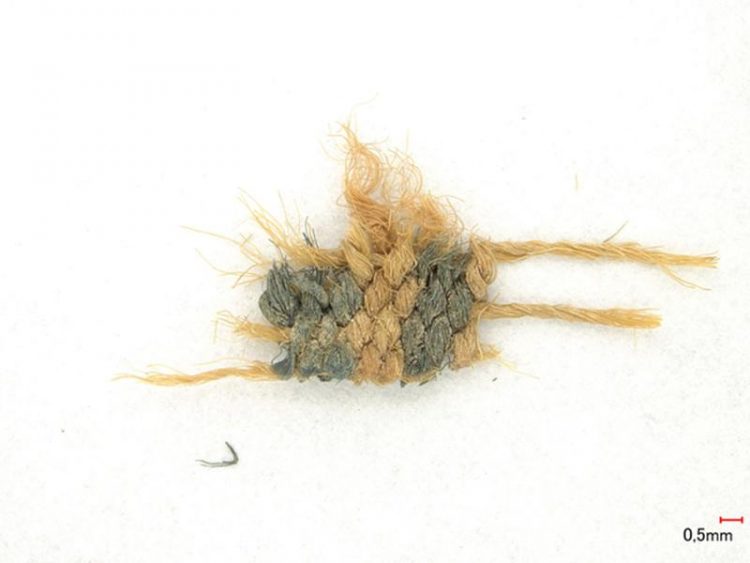New study shows people used natural dyes to colour their clothing thousands of years ago

Samples like these were examined by the chemists from MLU. Annemarie Kramell
Chemists Dr Annemarie Kramell and Professor René Csuk from MLU examined two ancient textile samples. One comes from the ancient Chinese city of Niya and was probably once part of a shirt. It is over 2,000 years old.
The other sample comes from Peru and dates back to 1100 to 1400 AD. It was produced by the Ichma people who lived in Peru at that time. Today, there is often little evidence of the colourfulness of such ancient clothing.
“Time has not treated them well. What was once colourful is now mostly dirty, grey and brown,” says René Csuk. Over time, the natural dyes have decomposed as a result of the effects of light, air and water, explains the chemist. In the past, only natural dyes were used.
“The roots of a genus of plants called Rubia, for example, were used to create the red colours, and ground walnut shells produced the brown tones,” says Annemarie Kramell. Even back then, people mixed individual materials to create different shades.
The researchers have developed a new analytical method that allows them to detect which materials were used for which colours. With the aid of modern imaging mass spectrometry, they have succeeded in depicting the dye compositions of historical textile samples as isotopic distributions.
Previously, the dyes had to be removed from the textiles. However, that previous method also destroyed the pattern. This new approach enables the chemists from MLU to analyse the dyes directly from the surface of the textile samples. To do this, the piece of material under investigation is first embedded in another material.
“The piece is placed in a matrix made up of a material called Technovit7100. Slices are produced from this material that are only a few micrometres thick. These are then transferred to special slides,” explains Csuk.
Similar methods are used, for example, in medical research to examine human tissue. The advantage is that this method can be used to study very complex samples on a micrometre scale.
“This enables us to distinguish between two interwoven threads that held originally different colours,” says Csuk.
As part of the new study, researchers were able to detect indigo dyes in the samples. However, the method can also be applied to many other dye classes and provides insights into the process of textile production in past cultures, the two scientists conclude.
The research was funded by the Federal Ministry of Education and Research as part of the project “Silk road fashion: Clothing as a means of communication in the 1st millennium BC, Eastern Central Asia”. The Hans Knöll Institute in Jena and Dr Gerd Hause from MLU’s Biocentre were also involved in the project.
Kramell A. E. et al. Mapping Natural Dyes in Archeological Textiles by Imaging Mass Spectrometry. Scientific Reports (2019). doi: 10.1038/s41598-019-38706-4
Media Contact
More Information:
http://www.uni-halle.deAll latest news from the category: Life Sciences and Chemistry
Articles and reports from the Life Sciences and chemistry area deal with applied and basic research into modern biology, chemistry and human medicine.
Valuable information can be found on a range of life sciences fields including bacteriology, biochemistry, bionics, bioinformatics, biophysics, biotechnology, genetics, geobotany, human biology, marine biology, microbiology, molecular biology, cellular biology, zoology, bioinorganic chemistry, microchemistry and environmental chemistry.
Newest articles

Properties of new materials for microchips
… can now be measured well. Reseachers of Delft University of Technology demonstrated measuring performance properties of ultrathin silicon membranes. Making ever smaller and more powerful chips requires new ultrathin…

Floating solar’s potential
… to support sustainable development by addressing climate, water, and energy goals holistically. A new study published this week in Nature Energy raises the potential for floating solar photovoltaics (FPV)…

Skyrmions move at record speeds
… a step towards the computing of the future. An international research team led by scientists from the CNRS1 has discovered that the magnetic nanobubbles2 known as skyrmions can be…





















